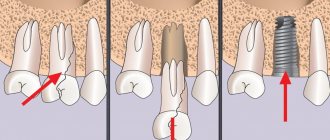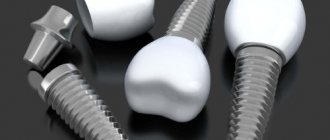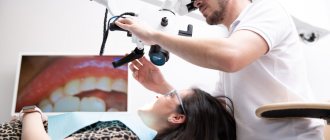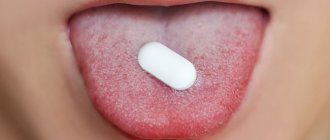Malocclusion is one of the most common pathologies, occurring in almost every second person.
Not in all cases a person needs to correct a defect, especially if the pathology is not significant. A popular method for correcting uneven rows – aligners – allows you to achieve effective and safe results in a relatively short time. To choose the right type of treatment for yourself, you need to find out which companies make aligners and compare them.
Modern therapy with aligners is represented in the Russian Federation by several companies. The price varies and depends on many factors. First of all, this is the country of the manufacturer, then a consultation with a doctor from the company or a Russian orthodontist at the place of treatment. Also, different clinics offer promotions. Let's compare all the aligner options presented in our country. Let's look at five manufacturers of aligners that are very popular in Russia: Orthosnap (USA), Invisalign (USA), 3D Smile (3DSmile, Russia), Star Smile (Russia), Avantis 3D (Russia) ).
The most popular and widespread corporation in the world that produces aligners is Invisalign.
, occupy a leading position, covering a large geography.
The manufacturing plant is based in Mexico. Orthosnap
is another American manufacturer with its own laboratory located in the United States.
Invisalign and Orthosnap have proven to be the best. Each of them has its own clinical laboratories and professional doctors, whom they specially train in the methods of studying pathologies and how to create a virtual treatment model.
Russian company 3D Smile
in Skolkovo talks about its product as having absorbed all the positive aspects of the technologies of the past and present. The design of the 3D Smile device is as durable as braces. The aligners have absorbed the experience of previous generations. All this allows us to use new technologies to create a high-tech and effective product.
Star Smile Company
(Russia) creates aligners using its own technology, achieving a high level of accuracy using computer programs. It supplies its products not only to the domestic market, but also to countries such as the USA, Germany, Brazil, Australia, and the Netherlands. Production is located in Russia.
Avantis 3D
are made on a three-dimensional model with the development of an individual treatment plan. Analogue of American aligners. The doctor first determines the bite and models the process of correcting it on a computer. Then invisible, comfortable structures are created that must be worn constantly to achieve the predicted result. The company sets a minimum treatment period of six months.
What are aligners
Aligners for straightening teeth are removable corrective systems that involve consistent micro-movement of teeth into the correct position. Before starting treatment, the patient undergoes a comprehensive diagnosis necessary to create an accurate treatment program. The doctor then takes digital impressions of the teeth and sends them to a laboratory to create corrective aligners. They are made taking into account the natural biomechanics of teeth and jaw movement. The patient receives a set of 10-40 aligners (depending on the clinical picture). The aligners in the set differ in the shape and size of the dental arch. The patient alternates designs until the desired result is achieved.
Elastic, transparent orthodontic aligners made of thin thermoplastic material fit tightly to the teeth, making orthodontic treatment as comfortable as possible for the patient and invisible to others. Even sapphire braces are inferior to aligning aligners in terms of invisibility, aesthetics and wearing comfort.
Aligners are manufactured in more than a dozen laboratories around the world, which gives the patient the opportunity to choose an aligner system at the most attractive price. Teeth straightening at the Ilatan clinic in Moscow is carried out using corrective systems from reliable manufacturers. The use of digital technologies allows you to see your future smile even before correction begins.
What types of diastema exist and why do they occur?
Diastemas, as well as tremata, come in different types. Experts divide them by etiology, location, and type of displacement. Doctors also distinguish between false and true diastemas separately. The latter are always a consequence of pathology, while false ones are found only in children and disappear as the teeth grow.
Symmetrical and asymmetrical diastema
Most often, the diastema is symmetrical, that is, the incisors are equidistant from the frenulum. An asymmetrical arrangement is much less common, and with it, only one incisor is displaced, the second is in the correct position.
Lateral deviation of crowns
With lateral deviation of the crowns, the roots are located correctly, the discrepancy begins only on the visible part of the teeth. Most often, this pathology is a consequence of supernumerary teeth. Also, a gap may appear due to bad habits.
Body lateral displacement
The peculiarity of this type of displacement is the complete deviation of the teeth along with the roots. It is provoked by congenital adentia, the lower attachment of the frenulum, and compaction of the middle suture on the bone tissue. In the latter case, the teeth cannot overcome the obstacle and take the correct position.
Medial inclination of central incisors
This type of diastema is the most difficult, since it simultaneously causes deviation of the teeth from the center and their rotation along the axis. The cause is almost always supernumerary teeth located between the first incisors or odontoma, a benign tumor growing in the jaw bone.
Pros and cons of aligners
| Advantages | Flaws |
| High aesthetics – a transparent mouthguard is invisible on the teeth, so wearing it is not accompanied by psychological discomfort. | Aligners may not solve complex orthodontic problems |
| Easy to care for – the ability to independently remove the structure and carry out hygiene procedures. | The technology is only suitable for a fully formed dental system |
| Hypoallergenic – the systems are made from a new generation biopolymer thermoplastic material that does not cause allergies. | You need to wear aligners at least 22-23 hours a day |
| Lightness and invisibility – invisible to others, do not affect diction. | There are contraindications |
| Wearing comfort – the design does not contain metal elements that can injure the soft tissues of the oral cavity. | The cost of treatment is higher than correction with braces |
| Efficiency – successfully cope with almost any malocclusion. | |
| Predicting the result – digitally created orthodontic aligners fit precisely, making treatment predictable. |
Do you want to correct your bite? We are waiting for you for a free consultation!
- The leading expert of the clinic, Nana Gezalova, is doctor No. 1 in the Invisalign rating. This is a talented orthodontist with 15 years of experience and extensive experience working with Invisalign aligners. She personally trains the clinic’s orthodontists and strictly controls the quality of treatment for each patient.
- We never change the cost of treatment after signing the contract. The price of treatment does not increase, even if the dollar exchange rate has changed.
- The clinic’s specialists continuously improve their knowledge and skills, participate in international conferences, and communicate with foreign colleagues.
- We use advanced equipment and regularly update our technical fleet.
- We don’t just straighten teeth, but work comprehensively to ensure healthy jaw joints, correct bite and high aesthetics.
Indications and contraindications for installation
Orthodontic aligners can cope even with complex bite defects. Systems are also indicated if you need to move individual teeth in a row, secure or improve the results of wearing braces. Main indications for treatment with aligners:
- trema, diastema;
- crowded teeth;
- distal bite
(the lower jaw occupies a posterior position in relation to the upper jaw); - cross bite
– in which the lower jaw overlaps the upper jaw, and not vice versa; - open bite
– the lateral or front teeth do not close together; - protruding teeth
– one of the dental arches is pushed forward; - direct bite
- the maxillary and mandibular dentitions are closed by the cutting edges of the incisors; - predator fangs
- the fangs overlap the upper incisors; - mesial bite
– the lower jaw protrudes forward.
Teeth straightening begins immediately from the moment the mouthguard is applied, and the first result is noticeable within a month. Corrective mouth guards are used to correct the bite in adults and adolescents when baby teeth have been completely replaced with permanent teeth and the dentofacial system has fully formed.
Aligners are not used to straighten teeth if:
- periodontal diseases, due to an increased risk of losing teeth;
- complex complex defects in jaw development;
- lack of teeth in large numbers (more than 4);
- impacted teeth.
Corrective aligners have fewer contraindications than braces. Thin, weakened enamel does not become an obstacle to corrective treatment with aligners. The doctor will conduct remineralization therapy and then begin to correct the bite. In complex clinical cases, if it is impossible to fully correct the bite without a brace system, it is possible to combine treatment with aligners with the use of braces.
Who should not wear trainers?
The systems described are primarily medical devices, so if you are impressed by the various photos before and after the trainer and want to buy such a device for yourself, be sure to consult with your doctor. Self-treatment with a trainer is dangerous and can cause harm.
There are other situations when it is better to choose another treatment option:
- if there is nasal congestion, which has become chronic (the patient simply will not be able to train at full strength, because he will have breathing problems);
- when the bite of the teeth in the lateral areas is cross;
- if a trainer is chosen for a child , but the child is uncontrollable and does not obey his parents (classes must be on schedule, otherwise there will be no effect).
In the described cases, it is better to use braces to correct a malocclusion.
Pros and cons of treatment with trainers
Why are dental trainers for adults and children so popular? This system has many advantages that make it popular and convenient. The main advantages of treatment using such structures:
- low price. The most budget trainer is very cheap, and modern improved models still cost 3-4 times less than an inexpensive brace system;
- ease of care. The patient does not require any special cleaning products or devices - just toothpaste and a brush are enough;
- versatility. The trainer does not need to be made specifically taking into account the patient’s characteristics; you just need to choose a model by size;
- wearing does not have a negative effect on the enamel or soft tissues, the devices do not injure the tongue or gums;
- In addition to bite, trainers also solve other problems, for example, correcting speech (in cases where diction problems were caused by incorrect dentition);
- the patient experiences minimal discomfort while wearing.
An additional advantage of trainer systems is that they do not cause any psychological discomfort: the trainer can be removed at any time to eat, drink or go to an important meeting. However, this method of changing the bite also has its disadvantages:
- slow effect. You need to wear the trainer for at least a year to see real results;
- prohibition on eating and drinking while wearing. If you take a trainer for a child , this can become a serious problem;
- Treatment must be carried out strictly according to schedule and for the required amount of time per day, otherwise there will be no effect. This option is only suitable for responsible people, and children should be supervised by parents.
Trainer effect: before and after
What is better - veneers, braces or aligners?
Since veneers are not able to correct bite defects, it is incorrect to compare them with braces or aligners. Thanks to veneering, you can get a flawless smile, correct the shape and size of teeth, hide interdental spaces, enamel defects, and eliminate slight curvature of teeth. The mechanism of operation of braces and aligners when straightening teeth is completely different - the orthopedic system constantly puts pressure on the dentition, taking into account the natural micromobility of the dental units, gradually moving them to a given position.
The speed of treatment with aligners is 30% higher than with braces. There is absolutely no risk of damaging tooth enamel or injuring the mucous membrane when wearing corrective aligners, which cannot be excluded when treated with braces. Also, the advantages of aligners include the absence of allergies, quick installation and the ability to see your future smile before the correction begins. Braces systems cannot boast of this. In some cases, aligners are powerless, but braces are successful. Elastic aligners do not damage the enamel, provide high-quality dental care and are not visible when worn. Orthodontic aligners are inferior to braces due to narrower indications for clinical use and higher cost of treatment.
How to care for trainers
Caring for jaw trainers is very simple and does not require special skills. It is available to patients of all ages. Follow simple rules:
- Always rinse the device after removing it from your mouth. Whenever it gets dirty, clean the trainer with a toothbrush and toothpaste, just as you would brush your teeth.
- Store the product in a special container to prevent dust, dirt and accidental damage.
- Do not chew, chew, or boil the apparatus. You need to rinse it with warm water, not cold or hot, otherwise you can ruin the plastic.
- If the trainer is damaged, you should immediately take it to the orthodontist so that the doctor can tell you whether you can continue to use the product or whether you need to buy a new one.
Manufacturing Features
When planning orthodontic treatment, digital technologies, specialized software and 3D modeling are used to create unique molds based on individual impressions from the patient’s teeth. To take accurate parameters, a digital intraoral scanner is used, the data from which is transferred to a computer. In the laboratory, 3D models are created according to individual parameters, according to which the required number of aligners is made. Numbered boxes with aligners are delivered to the dentist. The orthodontist explains to the patient how to properly install and remove aligners, and issues kits for 1-2 months of correction. Depending on the selected corrective system, production can take from several days to 2-3 weeks (if we are talking about foreign brands such as Invisalign, FlexiLigner, etc.)
Why is an unclosed diastema dangerous?
The large distance between the teeth cannot be ignored. You need to visit an orthodontist, who will tell you what caused the pathology and whether it needs correction. At ORTHODONT CENTER clinics, the first consultation is free. If the doctor suspects serious changes in the structure of the jaws, he will conduct a detailed examination using X-ray equipment or a CT scanner.
If the situation is unfavorable, the specialist will offer various types of correction that can remove the cleft and at the same time eliminate the problems associated with it. Untreated diastema can lead to gum disease, the formation of “pockets” in the periosteum, and premature tooth loss. Due to the diastema, incorrect pronunciation of hissing and whistling sounds may occur.
Stages of treatment
- Diagnostics
– detection of malocclusions, X-ray examinations (CT, TRG), taking digital impressions, photo protocol (for Invisalign systems). Transferring the results obtained to the laboratory, modeling the progress of treatment. - Preparation
– treatment of teeth, gums (according to indications), sanitation of the oral cavity (removal of stone, plaque), replacement of old defective fillings. - Installation
- the orthodontist will install the first aligners, explain how to insert and remove them, issue a treatment kit, and schedule the next visit. You need to visit a doctor for monitoring every 2-3 months. If problems arise, you should consult a doctor immediately. - Completion of treatment
- when the planned result is achieved, the correction of the dentition is considered complete. The doctor selects a retainer to prevent the teeth from moving back to their original position.
Until the desired result is achieved, the system is worn around the clock, every day, and removed only when eating and brushing your teeth. The aligners are replaced every 2-3 weeks, each new device gradually moves the teeth into the desired position. The duration of orthodontic treatment depends on the clinical picture and ranges from six months to two or more years.
How to put on and wear a trainer correctly. How long does it take to get used to
Adult and children's dental trainers are put on and worn the same way. Installing the device is quite simple:
- Place the device in your mouth so that the central stop is directed towards the upper palate. Next, find a position so that the stopper rests on the tip of the tongue and does not create discomfort.
- Move your lower jaw in different directions until the plates fit on the molars. Have you stopped slipping? You have achieved the desired result.
- Close your jaws with little force. You should feel pressure on all your teeth. You can touch the tip of the trainer with your tongue to feel if it fits correctly.
- Check if the trainer is positioned correctly: tighten your lips and take 3-4 deep breaths. If breathing is difficult, repeat the previous steps until it becomes easier.
Scheme for putting on the trainer
You need to wear the trainer for 1-4 hours during the day, as well as throughout the night. The regimen is determined by the doctor and must be followed. You can hold it for 30-40 minutes, but you cannot use the device less than necessary. If you need to remove the trainer, try to return it to its place as quickly as possible.
While wearing it, a person should not talk, eat or drink. If you are going to wear a trainer with your child, it is better to come up with entertainment for him during classes, for example, you can watch a cartoon or a movie, or draw. The habit of wearing a trainer develops over different periods of time – it all depends on the patient. At night, it is better to monitor the device regularly for at least a month (it may crash). During the day, the discomfort disappears in about a week, sometimes less.
Do not forget that while wearing a trainer, it is important to see a doctor once every two to three months. A visit to the orthodontist is a necessary procedure, because it allows you to determine the dynamics of changes in the dentition and correct the process in time if something goes wrong.
Prevention of recurrence of diastema
Relapses in orthodontic treatment, unfortunately, occur frequently. This is especially frustrating considering how much time and money is involved in fixing the problem. In the case of diastema, its appearance can be caused by various reasons. The most common are incorrectly selected treatment and neglect of the orthodontist’s recommendations during the retention period.
Sometimes patients refuse the necessary surgical treatment or wearing braces, and insist on “simple” correction methods, for example, installing crowns or masking the gap with composite materials. But since the problem remains unresolved, the diastema will return.
Likewise, she will not keep you waiting if, after treatment, the patient decides to ignore the orthodontist’s recommendations and does not wear retention devices.











